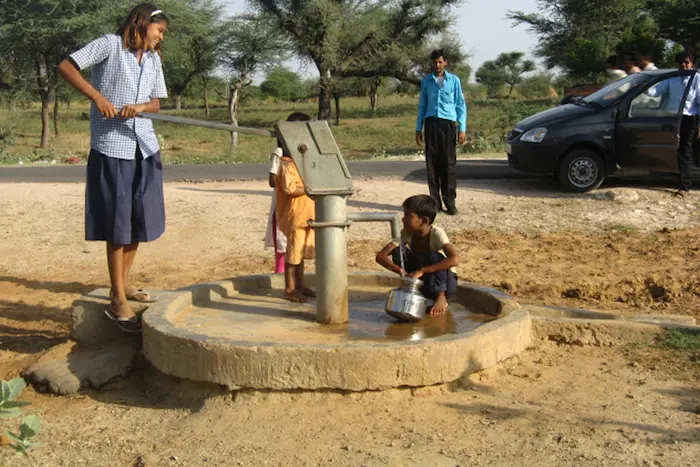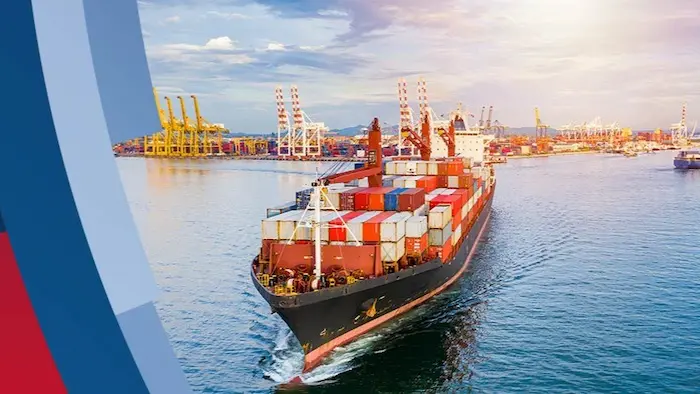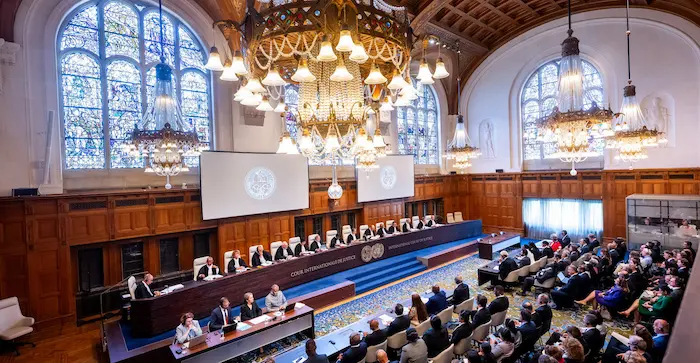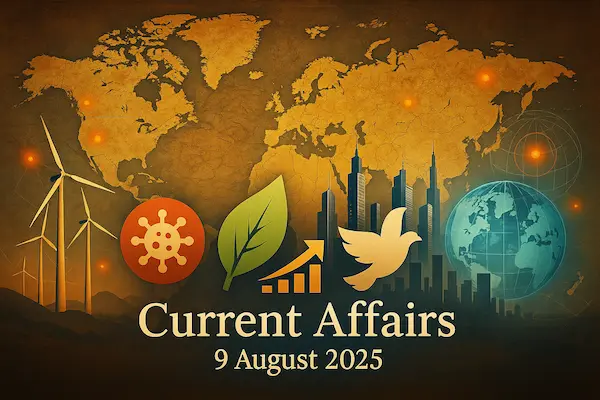1. Triple Disaster in Upper Bhagirathi Valley – Wake-Up Call on Himalayan Climate Vulnerability and Policy Negligence – Environment

Why in News
On August 5, 2025, three successive climate-related disasters struck the upper Bhagirathi (Ganga) river valley in Uttarkashi district, Uttarakhand. The incidents in Dharali, Harshil, and surrounding areas caused deaths, missing persons (including army personnel), and heavy infrastructure loss. This has reignited debates on Himalayan climate fragility, glacial melt, and governance failures in eco-sensitive zones.
Background
- Upper Bhagirathi Valley is part of the Ganga’s headwaters, located in a high seismic and high-altitude glacial region.
- Bhagirathi Eco-Sensitive Zone (BESZ): Declared in 2012 to regulate development activities from Gaumukh to Uttarkashi, aiming to protect fragile Himalayan ecosystems.
- Himalayan Vulnerability: Rising temperatures and erratic monsoons accelerate glacial melt, increase avalanche risks, and trigger cloudbursts.
Key Details of the Disaster
Incidents in sequence:
- Dharali Flood – Around 1:00 PM, a suspected cloudburst led to flash floods during a local festival, destroying houses and shops.
- Flash Flood in Harshil – Around 3:00 PM, a small mountain stream overflowed violently.
- Harshil Helipad Flood – At ~3:30 PM, floodwaters submerged critical relief infrastructure.
Casualties & Rescue:
- 4 deaths, 60–70 missing (including military personnel).
- Rescue operations by Army, NDRF, and local agencies.
Geological Factors:
- Steep slopes, deodar forests, and glacial cirques.
- Avalanches triggered by intense monsoon rains and warming temperatures.
Policy & Governance Failures:
- Poor enforcement of BESZ rules.
- Char Dham highway widening in eco-sensitive zones despite expert warnings about deforestation and slope destabilization.
- Ignoring environmental impact assessments (EIA).
Significance & Implications
National & Regional Impact:
- Highlights Himalayan climate vulnerability due to combined effect of global warming and local development pressures.
- Demonstrates need for climate-resilient infrastructure and disaster preparedness in high-altitude zones.
Policy Relevance:
- Urgent enforcement of eco-sensitive zone regulations.
- Balance between strategic connectivity (Char Dham road, border infrastructure) and ecological stability.
- Need for carrying capacity studies before large-scale projects in Himalayas.
Environmental Lessons:
- Cloudbursts and glacial avalanches are likely to become more frequent with climate change.
- Forest ecosystems (like deodar) play a crucial role in slope stability and water regulation.
Exam Connect – Possible Questions
Prelims
1. With reference to the Bhagirathi Eco-Sensitive Zone (BESZ), consider the following statements:
1.It extends from Gaumukh to Uttarkashi in Uttarakhand.
2.It was notified under the Environment (Protection) Act, 1986.
3.All hydroelectric projects are prohibited within its limits.
Which of the statements given above is/are correct?
A. 1 and 2 only
B. 2 and 3 only
C. 1 and 3 only
D. 1, 2 and 3
Answer: A. 1 and 2 only
2. Which of the following is NOT a typical trigger of flash floods in the Himalayan region?
A.Cloudbursts
B. Glacial lake outburst floods (GLOF)
C. Volcanic eruptions
D. Landslides blocking rivers
Answer: C. Volcanic eruptions
Mains
1. “The triple disaster in Uttarkashi is a stark reminder that climate change and policy negligence can be a deadly combination in the Himalayas.” Examine, with reference to Himalayan ecosystem vulnerability and the enforcement of eco-sensitive zone regulations.
2. Discuss the role of climate-resilient infrastructure and carrying capacity assessment in reducing disaster risks in the Himalayan region.
2. Groundwater Contamination – A Public Health Emergency – Environment

Why in News
The 2024 Annual Groundwater Quality Report by the Central Ground Water Board (CGWB) has revealed dangerously high contamination levels in several Indian states. This has escalated the issue from an environmental concern to a nationwide public health emergency, linked to chronic illnesses and fatalities.
Background
- Groundwater dependence in India:
- 85% of rural drinking water.
- 65% of irrigation needs.
- Legal framework: Governed mainly by the Water (Prevention and Control of Pollution) Act, 1974, which inadequately addresses groundwater contamination.
- Key agencies: CGWB, State Pollution Control Boards, Jal Shakti Ministry.
Key Findings of the CGWB Report
Contaminants Detected:
- Nitrates – in >20% of samples; source: excessive fertilizers, septic tank leaks.
- Fluoride – unsafe in >9% of samples; causes dental & skeletal fluorosis.
- Arsenic – found in Punjab, Bihar, Gangetic belt; linked to skin lesions & cancers.
- Uranium – >100 ppb in some districts; linked to phosphate fertilizers & over-extraction.
- Iron & heavy metals – in >13% of samples; sources: industrial discharges, mining.
Documented Health Impacts
- Fluorosis – affects ~66 million; causes joint pain, deformities.
- Arsenicosis – skin lesions, cancers; West Bengal, Bihar, UP.
- Nitrate poisoning – “blue baby syndrome” in infants; 56% districts exceed limits.
- Uranium toxicity – chronic kidney & organ damage.
- Waterborne diseases – cholera, dysentery, hepatitis from sewage infiltration.
Case Studies of “Groundwater Death Zones”
- Baghpat, UP – 13 deaths from kidney failure due to industrial effluents.
- Jalaun, UP – petroleum-like fluids in handpumps from underground fuel leaks.
- Paikarapur, Bhubaneswar – hundreds ill due to sewage-contaminated groundwater.
Root Causes
- Fragmented governance – multiple agencies, no coordination.
- Weak laws – Water Act 1974 inadequate for groundwater-specific issues.
- Inadequate monitoring – lack of real-time testing & reporting.
- Over-extraction – lowers water tables, concentrates pollutants.
- Industrial negligence – poor compliance with waste treatment rules.
Reform Pathways
- National Groundwater Pollution Control Framework – unified regulation & monitoring.
- Technology-driven monitoring – sensors, satellite data for early detection.
- Health-centric interventions – community-based defluoridation & arsenic removal units.
- Zero Liquid Discharge mandates for industries.
- Agrochemical management – organic farming, balanced fertiliser use.
- Citizen participation – local body involvement in water quality checks.
Significance & Implications
- Public health: Chronic illnesses, infant mortality, reduced productivity.
- Economic: Increased healthcare costs, reduced agricultural yields.
- Environmental: Permanent aquifer damage, biodiversity loss.
- Policy: Urgent need for integrated water governance linking health, agriculture, and environment ministries.
Exam Connect – Possible Questions
Prelims
1. With reference to groundwater contamination in India, consider the following pairs of contaminants and their primary sources:
| Contaminant | Primary Source |
|---|---|
| 1. Nitrates | Excessive fertiliser use |
| 2. Arsenic | Industrial discharge from steel plants |
| 3. Fluoride | Over-extraction of groundwater |
Which of the pairs given above is/are correctly matched?
A. 1 only
B. 1 and 3 only
C. 2 and 3 only
D. 1, 2 and 3
Answer: B. 1 and 3 only
(Arsenic contamination in India is mainly geogenic — natural geological sources — not primarily from steel plants.)
2. Which of the following diseases is NOT directly linked to groundwater contamination in India?
A. Skeletal fluorosis
B. Blue baby syndrome
C. Malaria
D. Arsenicosis
Answer: C. Malaria
Mains
1. “The groundwater contamination crisis in India is as much a governance failure as it is an environmental issue.” Discuss with suitable examples.
2. Suggest a multi-pronged strategy to address the challenges of groundwater contamination, ensuring both environmental sustainability and public health security.
3. India’s Economic Equilibrium – The “Goldilocks” Illusion – Economy
Why in News
The Finance Ministry recently described India’s economy as being in a “Goldilocks situation” — a phase of moderate growth, low inflation, and favorable monetary conditions. With GDP growth at 7.6%, stable corporate earnings, and peak interest rates, optimism is high for FY2025.
However, economists caution that structural weaknesses — including food inflation, stagnant real wages, inequality, and fiscal constraints — could destabilize this balance.
Background
- “Goldilocks Economy”: Term from economics referring to an economy that is “just right” — not too hot (high inflation) and not too cold (low growth).
- India’s FY2024 macro snapshot:
- GDP: $3.6 trillion
- Headline CPI inflation: 4.8% (May 2024) → 2.82% (May 2025)
- Fiscal deficit target: Reduction from 6.4% (2022–23) to 4.4% (2025–26)
Key Indicators – Strengths and Weaknesses
Positive Signals:
- Strong GDP growth (7.6%).
- Peak interest rates → potential for future monetary easing.
- Stable corporate earnings.
Underlying Concerns:
- Inflation Dynamics
- General CPI inflation has fallen, but food inflation remains high.
- CFPI hit 10.87% (Oct 2024), eroding household purchasing power.
- Erosion of Real Wages
- 2023: Nominal salary rise of 9.2%, but real wage growth only 2.5%.
- Inflation projections for 2025 → real wage growth halved.
- Households facing a “silent squeeze” on living standards.
- Income Inequality
- Gini coefficient dropped from 0.489 (AY13) to 0.402 (AY23) — improvement mostly in the formal sector.
- Informal sector (~80–90% of workforce) sees little benefit.
- Fiscal Pressures
- High fiscal deficit forces heavy government borrowing.
- Potential crowding out of private investment.
Significance & Implications
- Macroeconomic Stability Risk: Food price shocks can reverse CPI gains.
- Household Impact: Stagnant real wages + inflation → reduced consumption demand.
- Equity Concerns: Benefits of growth concentrated in formal sector.
- Policy Dilemma: Balancing deficit reduction with growth and welfare spending.
Exam Connect – Possible Questions
Prelims
1. Which of the following best describes a “Goldilocks economy”?
A. An economy with high growth and high inflation.
B. An economy with low growth and low inflation.
C. An economy with moderate growth, low inflation, and stable monetary conditions.
D. An economy in recession but with stable prices.
Answer: C. An economy with moderate growth, low inflation, and stable monetary conditions.
2. Consider the following pairs:
| Term | Definition |
|---|---|
| 1. Gini coefficient | Measures income inequality |
| 2. CFPI | Measures inflation in consumer food basket |
| 3. Real wages | Wages adjusted for inflation |
Which of the pairs given above is/are correctly matched?
A.1 and 2 only
B. 2 and 3 only
C.1 and 3 only
D. 1, 2 and 3
Answer: D. 1, 2 and 3
Mains
1. “India’s so-called ‘Goldilocks economy’ masks underlying structural weaknesses.” Discuss with reference to inflation, real wages, income inequality, and fiscal policy.
2. What policy measures can India adopt to ensure that macroeconomic stability is accompanied by equitable and sustainable growth?
4. Indian Flapshell Turtle (Lissemys punctata) – Conservation Concerns – Environment

Why in News
The Social Forestry Department of Vadodara, Gujarat, recently rescued an albino Indian flapshell turtle (Lissemys punctata) from a freshwater lake in Chikhodra.
This rare rescue has drawn attention to illegal wildlife trade risks and habitat threats faced by the species.
Background
- Species type: Small freshwater softshell turtle native to South Asia.
- Unique feature: Possesses femoral flaps – skin flaps covering the limbs when retracted.
- Albino variety: Lacks melanin pigment, making it highly vulnerable to predators and poaching for exotic pet trade.
Geographic Distribution
- Countries: India, Pakistan, Nepal, Bangladesh, Sri Lanka, Myanmar.
- Major River Systems: Indus, Ganges, Irrawaddy, Salween.
Habitat
- Prefers shallow, quiet freshwater bodies – rivers, ponds, lakes, marshes, canals.
- Needs sandy or muddy bottoms for burrowing and nesting.
Conservation Status
- IUCN Red List: Vulnerable.
- CITES: Appendix II – regulated trade.
- Wildlife (Protection) Act, 1972: Schedule I – maximum legal protection in India.
Major Threats
- Poaching – for meat and traditional medicine.
- Illegal trade – fishing bait, livestock feed, leather, exotic pet market.
- Habitat loss – pollution, urban encroachment, draining of wetlands.
- Special risk for albinos – targeted by illegal pet traders due to rarity.
Significance & Implications
- Serves as an indicator species for freshwater ecosystem health.
- Decline in population signals water pollution and habitat degradation.
- Protection aligns with India’s commitments under Convention on Biological Diversity and CITES.
Exam Connect – Possible Questions
Prelims
1. With reference to the Indian flapshell turtle (Lissemys punctata), consider the following statements:
1. It is native only to India and Sri Lanka.
2. It is listed as Schedule I under the Wildlife (Protection) Act, 1972.
3. It is classified as Vulnerable in the IUCN Red List.
Which of the statements given above is/are correct?
A. 1 and 2 only
B. 2 and 3 only
C. 1 and 3 only
D. 1, 2 and 3
Answer: B. 2 and 3 only
2. Which of the following is/are major threats to the Indian flapshell turtle?
1.Poaching for meat and traditional medicine.
2. Habitat loss due to wetland encroachment.
3. Pollution of freshwater bodies.
Select the correct answer using the code given below:
A. 1 only
B. 1 and 2 only
C. 2 and 3 only
D. 1, 2 and 3
Answer: D. 1, 2 and 3
Mains
1. Discuss the conservation challenges faced by the Indian flapshell turtle and suggest measures to strengthen its protection in India.
2. How can community-based conservation play a role in protecting freshwater turtle species like Lissemys punctata?
5. The Coastal Shipping Bill, 2024 – Modernising India’s Maritime Trade Framework – Economy

Why in News
The Coastal Shipping Bill, 2024 replaces Part XIV of the Merchant Shipping Act, 1958, creating a dedicated legal framework for India’s coastal trade. This reform is aligned with Viksit Bharat and Aatmanirbhar Bharat visions, aiming to reduce logistics costs, boost coastal cargo movement, and promote sustainable maritime transport.
Background
- Merchant Shipping Act, 1958: Earlier legislation governing both ocean and coastal shipping; outdated provisions created bottlenecks.
- Strategic context:
- India has a 7,500+ km coastline.
- Coastal shipping offers a low-cost, low-emission alternative to road and rail freight.
- Aligned with PM Gati Shakti, Sagarmala Programme, and Maritime Amrit Kaal Vision 2047.
Key Features of the Coastal Shipping Bill, 2024
- Expanded Definition of Coastal Trade
- Earlier: Only carriage of goods and passengers.
- Now includes: Exploration, research, commercial activities (excluding fishing).
- Licensing Framework
- Indian-owned vessels – No license required for coastal trade.
- Foreign/chartered vessels – License required from DG Shipping.
- OCI-chartered vessels (outside India) – No license needed.
- Strategic Planning Mandate
- National Coastal and Inland Shipping Strategic Plan to be formulated within 2 years, reviewed every 2 years.
- Promotes cooperative federalism between Centre and States.
- Digital Infrastructure – National Database
- Real-time tracking of vessels and cargo.
- Data-driven policymaking for investors and port planning.
- Regulatory Modernisation
- Updated penalties.
- Decriminalisation of certain offences.
- Alignment with global maritime standards.
Significance & Implications
- Economic Impact:
- Reduction in logistics costs.
- Boost for port-led industrialisation and coastal economic zones.
- Environmental Impact:
- Coastal shipping emits less CO₂ per tonne-km compared to road/rail.
- Strategic Role:
- Strengthens domestic shipping industry.
- Enhances supply chain resilience for coastal states.
Exam Connect – Possible Questions
Prelims
1. The Coastal Shipping Bill, 2024 replaces provisions under which earlier legislation?
A. Indian Ports Act, 1908
B. Merchant Shipping Act, 1958
C. Major Port Authorities Act, 2021
D. Inland Vessels Act, 2021
Answer: B. Merchant Shipping Act, 1958
2. Under the Coastal Shipping Bill, 2024, which of the following requires a license from the Director General of Shipping for engaging in coastal trade?
A. Indian-owned vessels
B. Foreign/chartered vessels
C. OCI-chartered vessels outside India
D. Government-owned vessels only
Answer: B. Foreign/chartered vessels
Mains
1. Discuss the significance of the Coastal Shipping Bill, 2024 in India’s vision for a sustainable and cost-effective transport ecosystem.
2. Evaluate the role of strategic planning and digital infrastructure under the new Coastal Shipping Bill in achieving India’s Maritime Amrit Kaal Vision 2047.
6. World Court’s Advisory Opinion Boosts Climate Action – Environment

Why in News
The International Court of Justice (ICJ) has issued a landmark advisory opinion clarifying that states have binding legal obligations to address climate change under international law. This opinion strengthens global climate governance and emphasizes the link between climate action and human rights.
Background
- ICJ – Principal judicial organ of the United Nations.
- Advisory opinions – Non-binding legal interpretations, but highly influential in shaping international norms.
- Global context – Rising climate-related disasters, disputes over Nationally Determined Contributions (NDCs), and calls from vulnerable states for stronger legal accountability.
Key Takeaways from the ICJ Opinion
- Legal Obligations of States
- States must comply with international climate treaties:
- UNFCCC (1992)
- Kyoto Protocol (1997)
- Paris Agreement (2015)
- Climate action is a legal duty, not a political choice.
- States must comply with international climate treaties:
- Accountability for NDCs
- Rejects the idea of unlimited state discretion in setting NDCs.
- Contributions must meet legally enforceable standards.
- Human Rights Integration
- Climate policies must respect rights of vulnerable populations.
- States remain accountable even if they withdraw from treaties.
- Strategic Implications for the Global South
- Empowers Small Island Developing States (SIDS) and developing nations to demand equitable climate finance and stronger mitigation efforts.
- Opens new avenues for climate litigation at national and international levels.
Significance & Implications
- Legal Impact: Raises the possibility of holding states legally liable for climate inaction.
- Diplomatic Leverage: Strengthens negotiation power of vulnerable nations in climate talks.
- Human Rights Protection: Recognizes climate change as a human rights issue.
- Policy Pressure: Encourages countries to adopt ambitious NDCs and long-term emission reduction strategies.
Exam Connect – Possible Questions
Prelims
1. Which of the following international agreements are legally relevant to the ICJ’s recent advisory opinion on climate change?
1. UNFCCC (1992)
2. Kyoto Protocol (1997)
3. Paris Agreement (2015)
Select the correct answer using the code given below:
A. 1 only
B. 1 and 2 only
C. 2 and 3 only
D. 1, 2 and 3
Answer: D. 1, 2 and 3
2. With reference to the International Court of Justice (ICJ), consider the following statements:
1. It is the principal judicial organ of the United Nations.
2. Its advisory opinions are legally binding on UN member states.
3. It settles disputes between states and can issue non-binding legal interpretations.
Which of the statements given above is/are correct?
A. 1 and 2 only
B. 1 and 3 only
C. 2 and 3 only
D. 1, 2 and 3
Answer: B. 1 and 3 only
Mains
1. “The ICJ’s advisory opinion transforms climate inaction from a political failure to a legal violation.” Discuss with reference to international environmental law.
2. How can the ICJ’s climate opinion empower vulnerable nations in climate negotiations and litigation? Examine with suitable examples.

